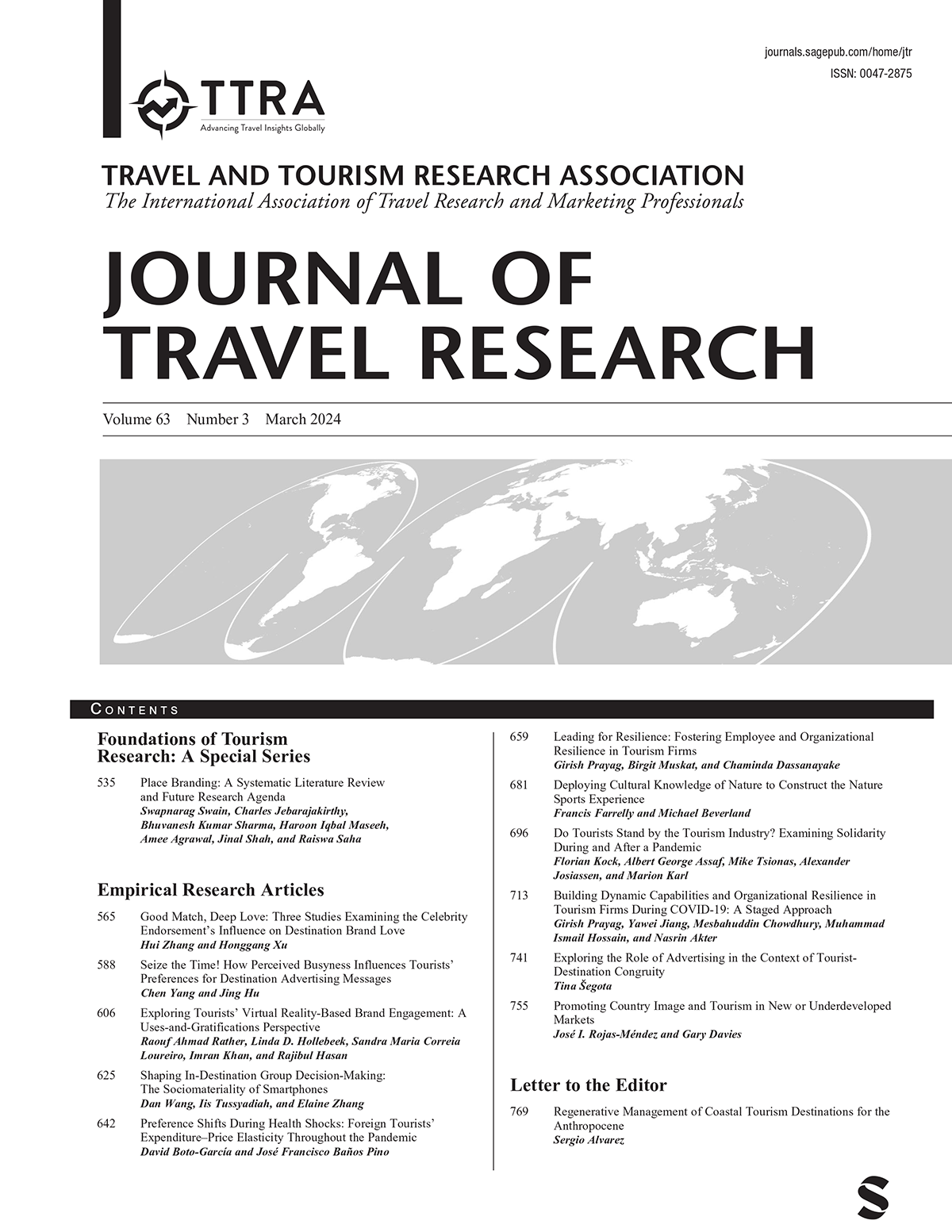如何避免遗产地的文化扭曲风险?配置分析视角
IF 8
2区 管理学
Q1 HOSPITALITY, LEISURE, SPORT & TOURISM
引用次数: 0
摘要
文化扭曲风险(CDR)威胁并挑战着遗产地的文化可持续性。本研究采用扎根理论和模糊集定性比较分析相结合的序贯探索性混合方法设计,分析文化扭曲风险的影响因素、形成过程和规避路径。结果表明,CDR是由“机构市场生产”框架引起的,该框架涉及8个影响因素和21个指标。CDR的形成没有必要的条件,但弱文化生产在形成高CDR中起着普遍的核心作用。此外,我们的研究强调,CDR的生成逻辑由四种配置组成,回避路径涵盖三种配置。这些发现阐明了CDR的产生机制,并从风险角度拓展了文化可持续性研究的理论体系。遗产地可以利用21项指标,通过建立制度保障机制和加强多党合作治理,降低文化扭曲风险。本文章由计算机程序翻译,如有差异,请以英文原文为准。
How to Avoid the Cultural Distortion Risk at Heritage Sites? A Configuration Analysis Perspective
Cultural distortion risk (CDR) threatens and challenges the cultural sustainability of heritage sites. This study adopted a sequential exploratory mixed-method design comprising grounded theory and fuzzy-set qualitative comparative analysis (fsQCA) to analyze the influencing factors, formation process, and avoidance paths of cultural distortion risk. The results indicate that CDR is caused by the “institution-market-production” framework, which involves eight influencing factors and 21 indicators. There are no necessary conditions for CDR formation, but weak cultural production plays a universal core role in forming high CDR. Moreover, our study highlights that the generation logic of CDR consists of four configurations and that the avoidance paths cover three configurations. These findings clarify the generation mechanism of CDR and expand the theoretical system of cultural sustainability research from a risk perspective. Heritage sites can use 21 indicators to reduce the cultural distortion risks by establishing institutional guarantee mechanisms and strengthening multiparty collaborative governance.
求助全文
通过发布文献求助,成功后即可免费获取论文全文。
去求助
来源期刊

Journal of Travel Research
HOSPITALITY, LEISURE, SPORT & TOURISM-
CiteScore
18.90
自引率
9.00%
发文量
66
期刊介绍:
The Journal of Travel Research (JTR) stands as the preeminent, peer-reviewed research journal dedicated to exploring the intricacies of the travel and tourism industry, encompassing development, management, marketing, economics, and behavior. Offering a wealth of up-to-date, meticulously curated research, JTR serves as an invaluable resource for researchers, educators, and industry professionals alike, shedding light on behavioral trends and management theories within one of the most influential and dynamic sectors. Established in 1961, JTR holds the distinction of being the longest-standing among the world’s top-ranked scholarly journals singularly focused on travel and tourism, underscoring the global significance of this multifaceted industry, both economically and socially.
 求助内容:
求助内容: 应助结果提醒方式:
应助结果提醒方式:


